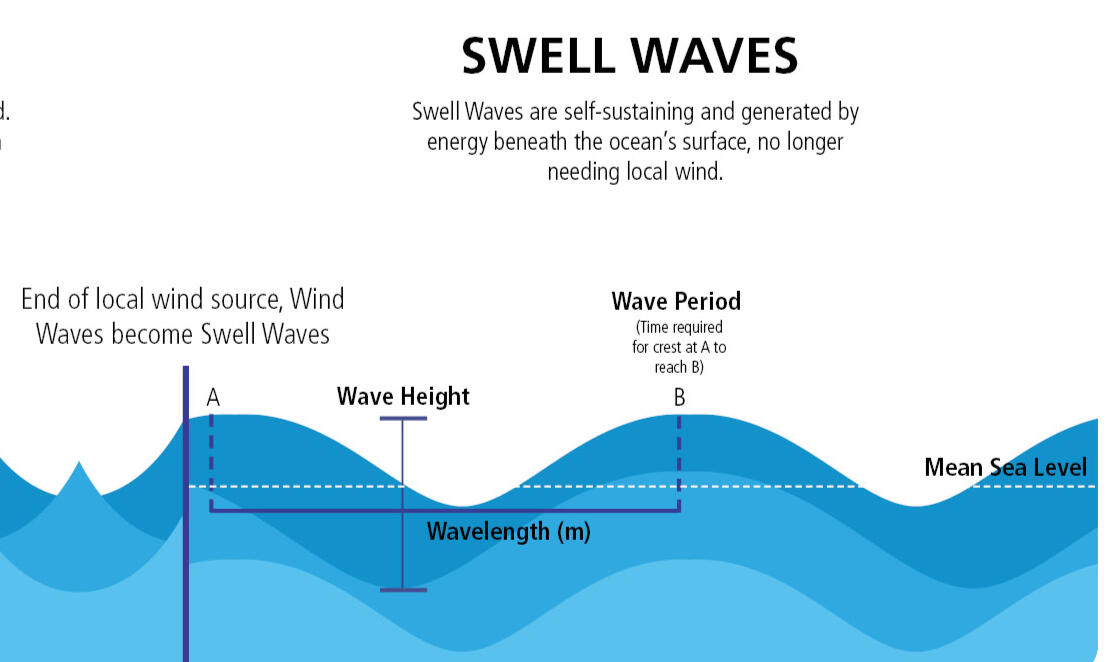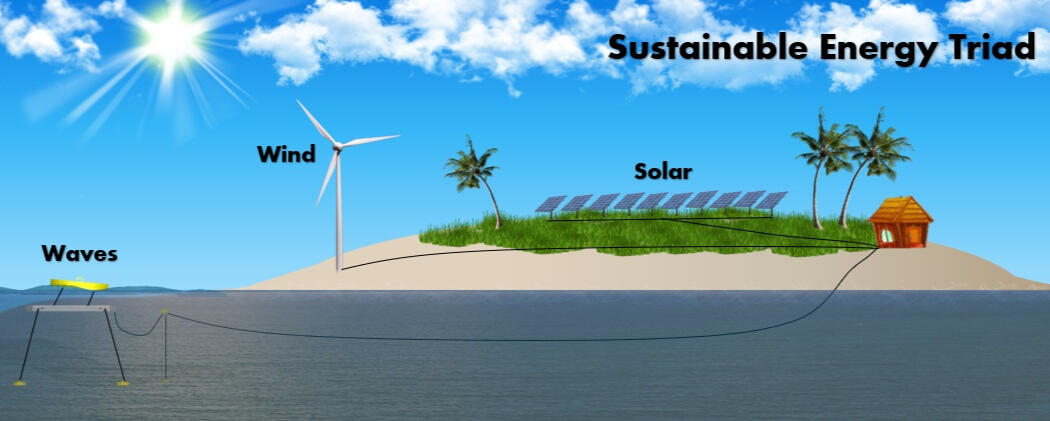Ocean swells to Energy

Project dedicated to adapt sustainable constant force of the ocean to Planet's energy needs.


What is swells energy
*** "Ocean waves contain tremendous energy. The theoretical annual energy potential of waves off the coasts of the United States is estimated to be as much as 2.64 trillion kilowatthours, or the equivalent of about 64% of U.S. electricity generation in 2019. The west coasts of the United States and Europe, and the coasts of Japan and New Zealand, have potential sites for harnessing wave energy. Many different methods and technologies for capturing and converting wave energy to electricity are under development. "- U.S. Energy information administration. ***
Raw wave energy and the associated potential power production from wave energy converters hold great promise as an abundant, carbon-neutral source of electricity generation for generations to come. The International Energy Agencies (IEA) Ocean Energy Systems (OES) (OES 2015) estimates that the global wave resource could provide up to 29,500 TWh of carbon-neutral electrical energy annually through the use of wave energy conversion (WEC) technology
Wave energy can be described as a concentration and moving reservoir of solar energy. As the world heats differentially from incoming solar irradiance, air masses heat and cool, moving air from high pressure to low pressure areas, thereby creating wind. When this wind blows over vast stretches of unobstructed ocean fetch, waves are generated. If the wind blows with sufficient speed, over a large enough fetch and for extended portions of time, ocean swells develop. The longer and harder the wind blows, over increasing fetches, the more the wave height and wave period increase. Once generated, ocean swells are able to propagate vast distances with negligible dissipation or dependence on the wind that generated them. As a result, ocean waves arriving at any shoreline globally are the culmination of the local wind conditions, as well as the hysteresis effect of hundreds of storms across the millions of square kilometers of surrounding ocean. As a result, ocean swells are moving reservoirs of concentrated wind and solar energy. The stores feature high power density and are well predicted. Excluding tidal energy resources, ocean waves are the most energy dense form of renewable energy sources. For example, solar energy flux is measured in kilowatts per square meter and reaches a maximum of 1 kW/m2 at high noon on the equator, while relatively benign regular wave sea state of 2-m wave height with a ten second period features ∼20 kW/m of wave energy flux (Falnes 2002; DNV 2010).
Who we are
1979's oil crisis, caused a major energy price surge, which affected all aspects of life.
Same year Mr Thomas J. Grossi started his path to the development of clean constant source of energy, which was able to fulfill energy needs of growing economies. His experience in marine and interactions with huge ocean waves pushed him to study ocean energy and possibilities to use it. Multiple models and solutions designed on paper and tested in prototypes, allowed him to find solution, which will be clean and uninterruptible compared to other technologies tested on market. As result wave conversion device was patented as unique solution in it's class. During his path Tom cooperated with multiple engineers and specialists, and finally he created team of enthusiasts and experts from different fields. Today on project along with Tom working mechanical engineer with PhD in Mechanical engineer studies, experienced business developer and project manager with extensive experience in renewable energy. We all believe in our solution and looking to deliver it to public.
.


Our Technology
.
Contact us
e-mail: tom@swellsoceanenergy.com
Thank you!
Sed enim lorem ullamcorper dolore. ac varius enim dolore. Proin aliquam facilisis.